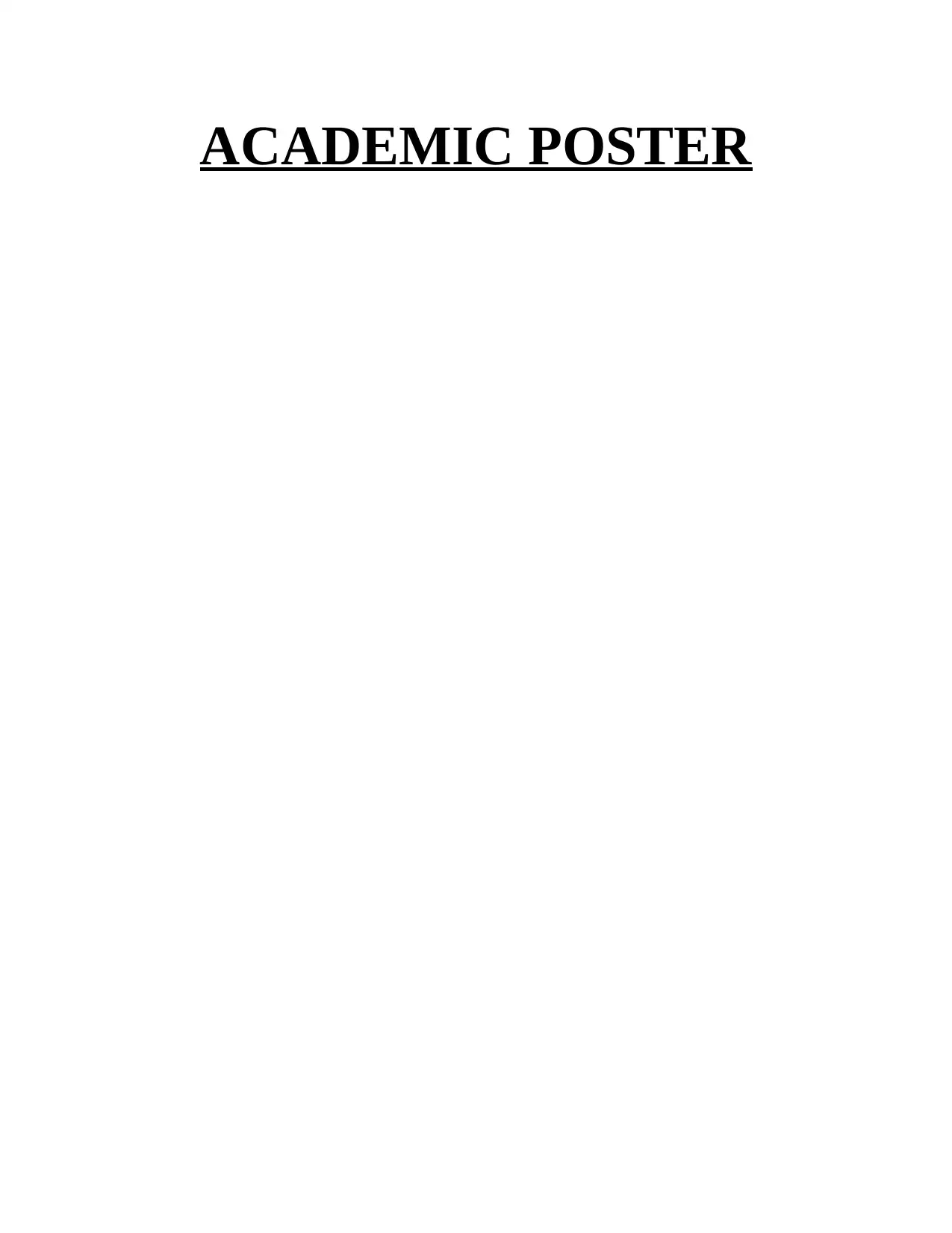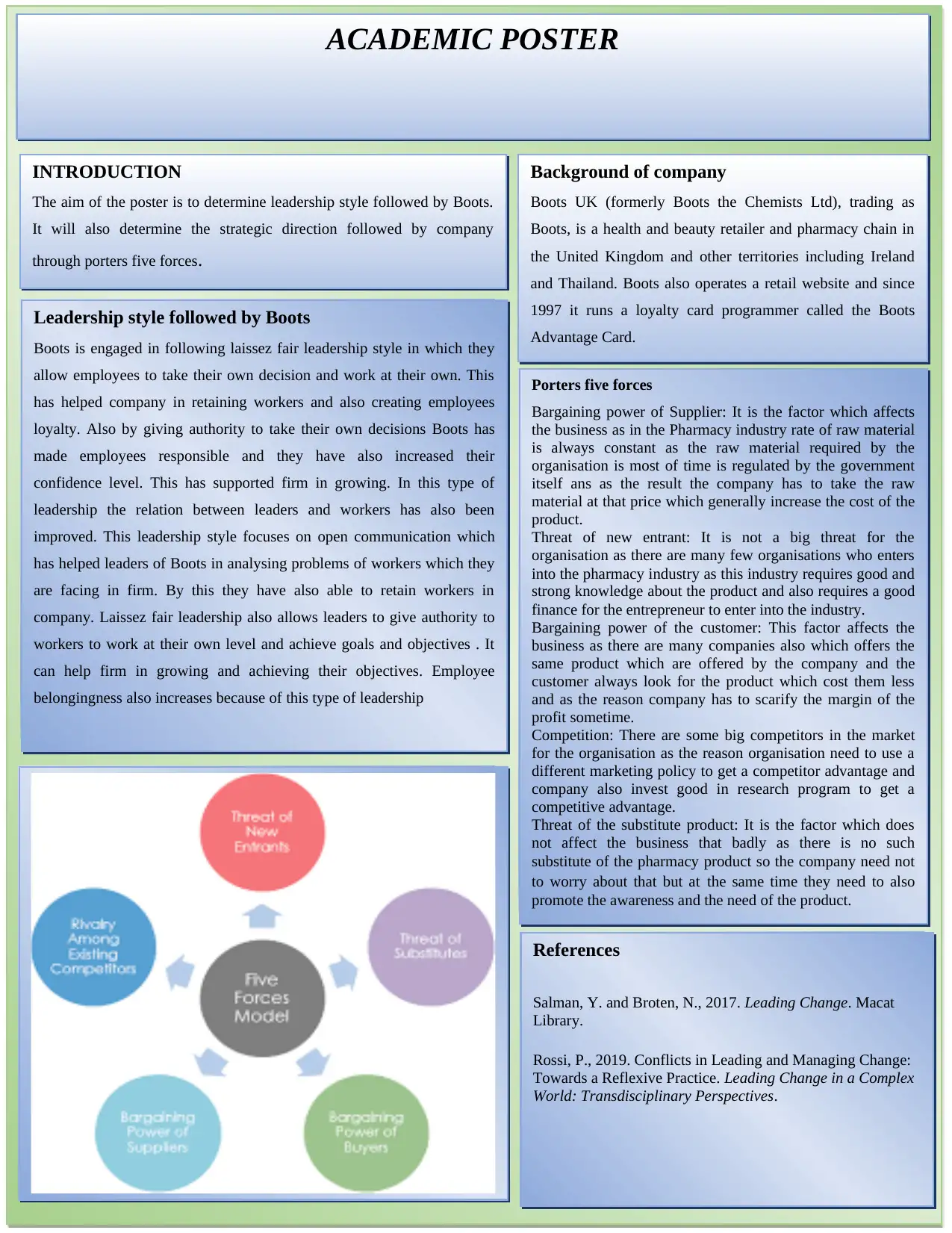Leadership Style Analysis: Boots' Strategic Direction Report
VerifiedAdded on 2021/02/19
|3
|599
|34
Report
AI Summary
This report provides an analysis of the leadership style and strategic direction of Boots. It focuses on the company's use of laissez-faire leadership, highlighting its impact on employee retention, empowerment, and loyalty. The report also examines the strategic landscape of Boots using Porter's Five Forces, considering factors such as the bargaining power of suppliers and customers, the threat of new entrants and substitute products, and the intensity of competition within the pharmacy industry. The analysis considers the Boots Advantage Card and its role in customer loyalty. The report concludes by summarizing the key findings regarding Boots' leadership approach and its strategic position in the market, emphasizing its competitive advantages and overall business strategy.
1 out of 3










![[object Object]](/_next/static/media/star-bottom.7253800d.svg)